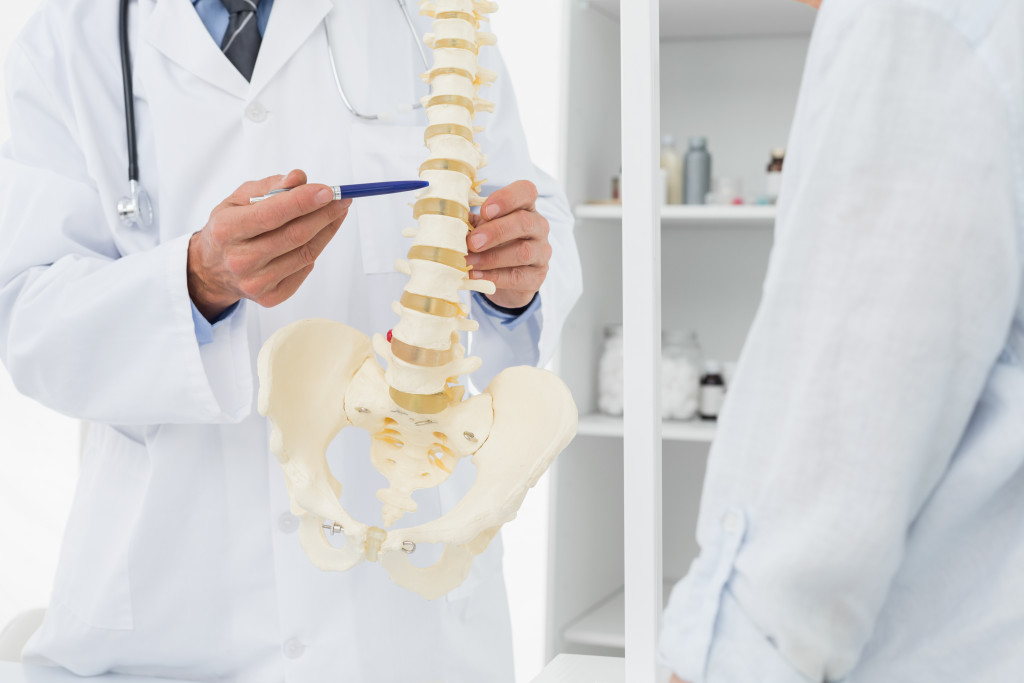Your bones are strong and sturdy—but that doesn’t mean they’re invincible. In fact, many bone disorders can impact people of all ages. While some of these disorders are more common in older adults, others can affect people of any age. Here’s a closer look at some of the most common bone disorders and what you can do to better manage them:
Osteoporosis
Osteoporosis is a condition that causes your bones to become weak. It’s most common in older adults, particularly postmenopausal women. However, osteoporosis can also affect men and younger adults. Some risk factors for developing osteoporosis include a family history of the condition, being small and thin, and smoking cigarettes. Your risk can also increase if you have conditions such as Celiac disease or rheumatoid arthritis. There are typically no symptoms in the early stages of osteoporosis. However, as the condition progresses, you may experience a hunched back or loss in height. There is no cure for osteoporosis, but treatments can help slow the progression of the condition and reduce your risk of fractures. These treatments include lifestyle changes such as getting enough calcium and vitamin D, quitting smoking, and doing weight-bearing exercises such as walking, running, or lifting weights. You may also need to take medication to help manage osteoporosis.
Scoliosis
Scoliosis is a condition that causes your spine to curve sideways. It typically develops in adolescents between 10 and 15 but can also occur in adults. One symptom of scoliosis is a visible curvature of the spine when looking at someone from the front or back. Other symptoms may include uneven shoulders or hips, one shoulder blade that appears more prominent than the other, difficulty breathing, or back pain. Depending on the curvature’s severity, there are varying methods to managing scoliosis, such as a brace or surgery. However, for those who are conscious about having to wear a brace or whose condition aren’t recommended to get surgery, you still have alternative treatment methods. You can work with a scoliosis specialist to develop a therapy plan that meets your needs. This may include extensive or moderate physical therapy, exercise, stretching, or posture training. Doing so will help you better manage scoliosis and prevent it from worsening over time.
Rheumatoid Arthritis
Rheumatoid arthritis is a disorder that affects your joints—specifically the joints in your hands and feet. It is caused by your body’s immune system attacking healthy tissue in your joints, leading to inflammation, pain, stiffness, and, eventually, joint damage. Some symptoms include joint pain and swelling, stiffness lasting more than an hour after waking up, fatigue, fever, and loss of appetite. Hence, the early treatment of rheumatoid arthritis can help relieve pain and prevent joint damage. You may also need to do physical therapy exercises or use assistive devices such as canes or splints to help with mobility if your joints are severely affected by rheumatoid arthritis.

Osteoarthritis
Osteoarthritis occurs when the cartilage that cushions the ends of your bones starts to break down. This can lead to pain, stiffness, and swelling in the joints. There are a number of things you can do to help manage osteoarthritis. First, it’s important to stay active and maintain a healthy weight. This will help reduce stress on the joints. Second, you should avoid activities that put undue strain on the joints, such as high-impact sports. Third, you can take over-the-counter pain medication to help relieve pain and inflammation. Finally, you may want to talk to your doctor about other treatment options, such as physical therapy or joint injections.
Bone Infection
A bone infection, also called osteomyelitis, is a severe condition caused by bacteria entering the bone, leading to pain, swelling, and redness at the site of the infection. The infection can occur after an injury or surgery or may develop due to an underlying medical condition such as diabetes. If left untreated, a bone infection can quickly spread to other parts of the body and become life-threatening. Treatment for a bone infection typically involves a combination of antibiotics and surgery. Sometimes, a lengthy course of antibiotics may be needed to clear the infection. In severe cases, a piece of infected bone may need to be removed. With prompt treatment, most people with a bone infection recover completely.
Bone disorders are more common than you might think and can impact people of all ages. While some bone disorders are more serious, treatments are available to help manage them and prevent them from progressing. Be sure to talk to your doctor if you think you may have a bone disorder so you can get started on treatment immediately.

